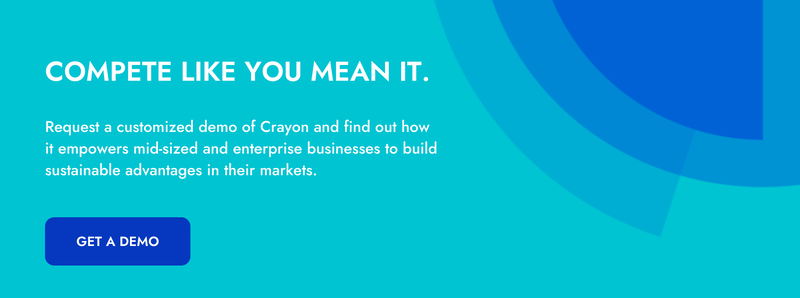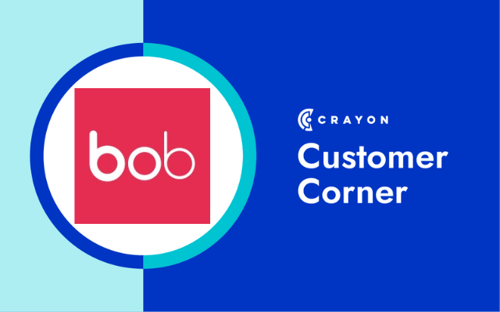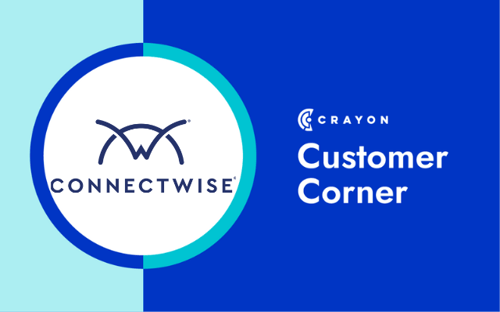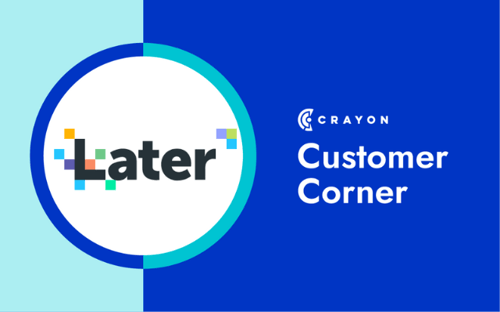This is a Crayon guest post from one of our partners, Satrix Solutions. Visit the Crayon Partner Directory to learn more!
You’ve probably heard the saying, “A rising tide lifts all boats.” It’s associated with the idea that an improved economy will benefit all participants. But what happens when the economic environment is more challenging? B2B companies still need to grow, albeit likely at a slower pace. Where does new revenue come from without a ‘rising tide’?
One strategy often employed is to target the customers of your competitors and try to lure them away. That presents both an opportunity for companies that are well-positioned, and a threat, as many companies will face more competition and the risk of higher customer churn. What does this mean for B2B leaders? In short, it’s time to increase the focus on competitive intelligence (CI).
The Importance of Using Competitive Intelligence to Analyze Your Customers
Competitive intelligence involves identifying your key competitors and analyzing the marketing strategies, pricing models, product portfolios, customer service, and other areas of their business. With these insights, you can highlight your company’s competitive advantages and the unique value your customers experience with your products and/or services. This will enable you to anticipate competitors’ moves and adjust your own strategies accordingly.
With the right competitive intelligence insights and messaging, you can stay ahead of the competition, protect your existing customers, and target the customers of your primary rivals.
In addition to analyzing competitors’ strategies, B2B companies should also use competitive intelligence to analyze their own customer base. This includes understanding existing customers’ needs and preferences, identifying customer pain points, and developing strategies to address them.
The more you know about the sentiment, expectations, and satisfaction levels of your existing customers, the better positioned you will be to retain them, even if your competitors identify them as targets. Remember, research has shown that Promoters are less likely to be vulnerable to competitive offerings.
How to Gather Competitive Intelligence
There are CI platforms available (like Crayon!) to give you the most complete picture of your competitive landscape — but, if you don’t have the benefit of a CI platform to gather competitive intelligence and house it in one place, you can charge someone on your team with setting up Google Alerts, periodically checking competitor websites (including blogs, press releases, videos, testimonials, etc.), reviewing referral sites like G2 and Trustpilot, and monitoring social media.
Additional ways to gather CI include:
1. Conduct churn in-depth interviews
Another strategy employed by many Satrix clients is to stand up a robust Churn Analysis program. Churn analysis involves interviewing decision makers at customers that terminated their contract (and often switched to a competitor) to uncover the precise reasons they decided to leave.
Typically executed using in-depth phone interviews conducted by a 3rd party like Satrix Solutions, Churn Analysis programs will both identify opportunities for your company to improve while also uncovering insights into what competitors are offering, the messaging they are using, and how they are positioning against your company.
By providing key contacts at a churned account with a ‘safe’ venue to share their candid feedback, they will often reveal negative experiences that will help you identify frustrations other customers are likely experiencing. If the interview is conducted properly, they will also disclose what they found appealing about your competitor’s offering.
Whether it was pricing, service, software functionality, support, or something else, the insights gleaned across a number of interviews will provide clarity into exactly what strategies your competitors are using to try to steal your customers.
2. Find competitor mentions in satisfaction surveys
Another way to use competitive intelligence to reduce churn is to look for evidence of competitor mentions in customer satisfaction survey responses. A well-designed survey will include open-ended questions asking how existing customers would like to see your offering improve. It is not unusual for customer contacts to request enhancements based on what they saw from a competitor.
Also, by coding verbatim comments that refer to competitors or alternatives, companies can identify customers who may be considering a switch before they cancel. Analyzing unstructured survey feedback and identifying themes related to feature requests can also be an early warning sign that your competitors are emphasizing something they feel is a competitive advantage.
3. Listen to your customer service team
Competitive intelligence can also be gleaned by your front-line service teams during customer meetings (such as an Executive Business Review or Joint Success Planning). Customer Success Managers can carefully probe key contacts about whether they are hearing anything from competitors that resonate with them.
Having these types of discussions with your largest accounts will provide insight into whether your competitors are aggressively targeting your customers and, if so, the approach they are using.
4. Conduct sales win/loss interviews
Finally, a Sales Win-Loss interview program is another way to keep a watchful eye on your competitors. In particular, a robust discussion with your prospect’s decision-maker following a win or loss against your key competitors often proves immensely valuable for competitive intelligence. If Competitor A is consistently coming out ahead in head-to-head deals, then it’s likely the company will also be targeting your existing customers using a similar pitch.
The more you know about the approaches your competitors use when trying to poach your customers, the better equipped your company will be to keep customer churn to a minimum.
.png)
Related Blog Posts
Popular Posts
-
 The 8 Free Market Research Tools and Resources You Need to Know
The 8 Free Market Research Tools and Resources You Need to Know
-
 How to Measure Product Launch Success: 12 KPIs You Should Be Tracking
How to Measure Product Launch Success: 12 KPIs You Should Be Tracking
-
 24 Questions to Consider for Your Next SWOT Analysis
24 Questions to Consider for Your Next SWOT Analysis
-
 How to Create a Competitive Matrix (Step-by-Step Guide With Examples + Free Templates)
How to Create a Competitive Matrix (Step-by-Step Guide With Examples + Free Templates)
-
 6 Competitive Advantage Examples From the Real World
6 Competitive Advantage Examples From the Real World




